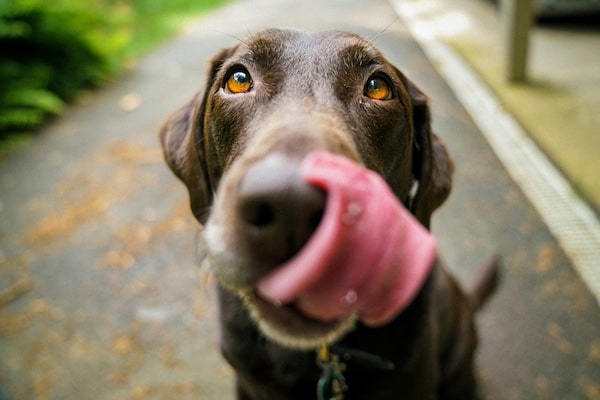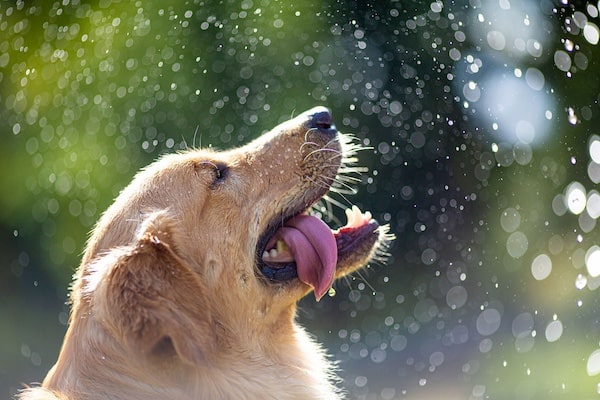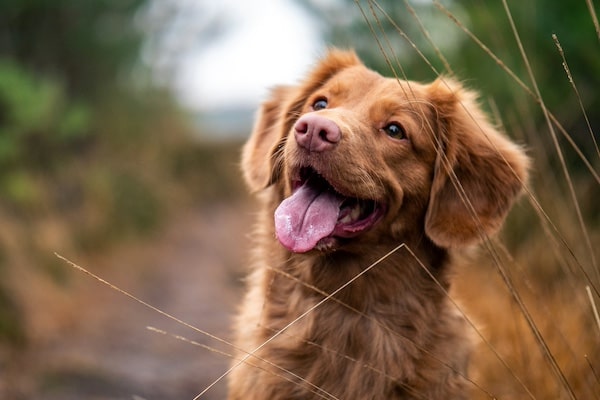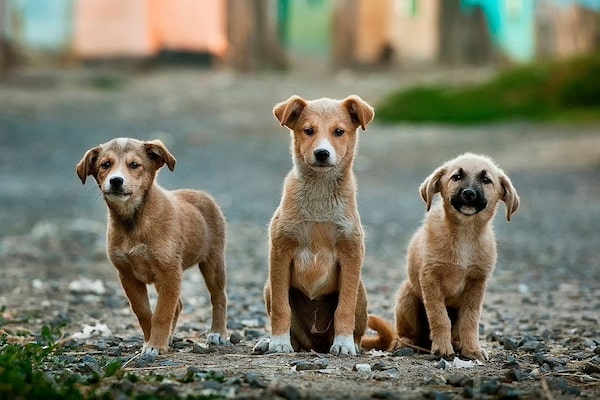The Norwich Terrier, a breed celebrated for its boundless energy and affable nature, emerges as an ideal companion for both individual and family environments. This guide delves into the distinctive traits and characteristics that define these spirited dogs.
Readers will discover how the Norwich Terrier’s intrepid spirit and manageable size make it a perfect pet for various living situations. Furthermore, the guide offers valuable advice on training, socialization, and care to help potential owners foster a healthy, joyful relationship with their new furry friend. Whether in a bustling city apartment or a sprawling country home, a Norwich Terrier adapts with remarkable ease, bringing joy and companionship to its human counterparts.
Norwich Terrier – Size & Life Expectancy
Height
10 inches
Weight
12 pounds
Life Expectancy
12-15 years
About the Norwich Terrier
The Norwich Terrier, one of the smallest terriers, originated in the United Kingdom during the late 19th century. Originally bred for their adeptness at vermin control on farms, these compact, hardy dogs quickly distinguished themselves as excellent companions for fox hunters as well. Their small size allowed them to burrow into fox dens, and their fearless nature made them invaluable in driving foxes out of their hiding spots. This dual capability for both farm work and hunting endeared them to a wide range of enthusiasts, shaping the early years of their development.
Historically, the Norwich Terrier shared its name with the Norfolk Terrier, with both breeds often referred to interchangeably as the Norwich Terrier. It wasn’t until 1964 that the Kennel Club in England recognized them as distinct breeds; the key differentiator being their ears: the Norwich has prick ears that stand up straight, and the Norfolk sports drop ears. This differentiation helped clarify their breeding lines and has preserved the unique identity of each breed to this day.
The Norwich Terrier Today
In contemporary settings, the Norwich Terrier enjoys a reputation as a spirited and sociable companion. Their small stature, typically standing just 10 inches at the shoulder and weighing around 12 pounds, makes them perfect for both rural and urban living environments. They possess a wiry, weather-resistant coat, which can be red, wheaten, black and tan, or grizzle, and requires regular grooming to maintain its condition and appearance.
Despite their historical role as working dogs, Norwich Terriers have transitioned well into family life, displaying an innate affection for their owners and a friendly disposition towards children and other pets. This adaptability has contributed to their rising popularity among various groups, from active singles and couples to families and the elderly. They particularly excel in households that can provide them with plenty of interaction and opportunities to explore and play.
Popularity and Ownership
The Norwich Terrier’s popularity has been on a steady incline. This is largely due to their versatile nature and the increasing demand for smaller, manageable canine companions that fit well into a variety of living situations. They are particularly favored for their robust health, longevity, and relatively low-maintenance needs compared to larger breeds.
Prospective owners should note, however, that while the Norwich is small, it has energy levels typical of much larger working breeds. These dogs thrive on regular exercise and mental stimulation and are known for their eagerness to participate in activities such as agility training, which channels their energy and satisfies their need for engagement.
The typical owner of a Norwich Terrier values not only the physical and emotional traits of these dogs but also their historical significance and their reputation as loyal, courageous companions. This breed is well-suited to anyone who appreciates a dog with a big personality in a small package and is prepared to provide the care, training, and attention that these lively terriers require.
In conclusion, the Norwich Terrier stands as a testament to the enduring appeal of terriers—intelligent, adaptable, and endlessly affectionate. Their journey from English farmhands to beloved pets in homes around the world underscores their remarkable adaptability and enduring charm.
Traits & Characteristics of the Norwich Terrier
- Compact and Sturdy: Small but robust build, well-suited for both urban and rural living.
- Energetic and Playful: High energy levels that require regular exercise and stimulation.
- Affectionate and Loyal: Known for forming strong bonds with their owners and being very family-oriented.
- Intelligent and Trainable: Quick to learn and responds well to positive reinforcement training techniques.
- Fearless and Spirited: Displays a courageous personality, typical of the terrier breed.
- Social and Friendly: Generally gets along well with other dogs and pets; good with children.
- Low-Shedding Coat: Wiry, weather-resistant coat that comes in colors like red, black and tan, or grizzle, requiring regular grooming.
Owning a Norwich Terrier
Considering bringing a Norwich Terrier into your life? This compact, spirited breed is renowned for its courage, charm, and level of activity. Ideal for various lifestyles, Norwich Terriers bring immense joy and companionship to their families. In preparing to welcome this delightful breed, it’s crucial to understand their specific needs in terms of health, exercise, grooming, nutrition, and training.
Health
Norwich Terriers are generally healthy, but like all breeds, they have predispositions to certain health issues. Common concerns include hip dysplasia, elbow dysplasia, and patellar luxation. Heart conditions and tracheal collapse also occasionally surface in the breed. Ensuring regular veterinary check-ups helps in early detection and management of these potential issues. Prospective owners should seek reputable breeders who conduct genetic testing to minimize the risk of inherited conditions. A proactive approach to health with preventative care, such as regular dental cleanings and parasite control, significantly boosts the overall well-being of a Norwich Terrier.
Exercise
Norwich Terriers possess a high level of energy and require regular exercise to maintain their health and happiness. Daily activities should include walks, play sessions, and opportunities for safe off-leash exploration. This breed excels in dog sports like agility, rally, and obedience, which not only stimulate their body but also their mind. For owners, engaging in these activities together strengthens the bond with their pet and keeps the dog well-socialized. It’s crucial to match their physical activities with their enthusiastic nature without overexerting the small canine.
Grooming
The coat of a Norwich Terrier is wiry and straight, with a thick undercoat that provides insulation and protection. Regular grooming is essential to keep their coat in good condition and to manage shedding. Brushing a few times a week, coupled with a professional grooming every few months, helps to remove dead hair and prevent matting. Paying attention to their nails, ears, and teeth also forms a critical part of their grooming routine. Owners should introduce grooming early in their dog’s life to ensure it becomes a positive experience for both.
Nutrition
A balanced diet tailored to their size, age, and activity level supports the health and energy of a Norwich Terrier. High-quality commercial foods that meet AAFCO (Association of American Feed Control Officials) guidelines are generally suitable. Given their propensity for weight gain, monitoring calorie consumption and weight regularly is crucial. Foods to avoid include those with excessive fillers, such as corn and soy, which offer little nutritional benefit. Also, be mindful of toxic foods like chocolate, grapes, and xylitol-containing products. Consistency in feeding routines and portion control plays a vital role in maintaining optimal health.
Training
Training a Norwich Terrier can be an enjoyable and rewarding experience due to their intelligence and eagerness to please. However, their strong-willed nature sometimes requires patience and creativity in training techniques. Early puppy training classes and consistent socialization are crucial to develop a well-rounded dog. These classes foster good behavior and help mitigate potential issues like excessive barking or stubbornness. Positive reinforcement techniques, such as treats and praise, are effective in training this breed. Encouraging good manners and obedience from a young age sets the foundation for a well-behaved adult Norwich Terrier.
Adopting a Norwich Terrier means committing to their care in these five critical aspects. This approach ensures a fulfilling and joyful life for both the dog and its owner.
The Norwich Terrier Standard
The breed standard of the Norwich Terrier encapsulates the ideal characteristics and features that define this vibrant and sturdy breed. It serves as a template against which the dogs are judged at shows and ensures that the breed retains the qualities for which it was originally esteemed.
General Appearance
The Norwich Terrier is a small, compact, and sturdy dog, epitomizing balance and proportion without any exaggerated features. It exhibits a hardy constitution with a strong structure, necessary for a dog originally bred for demanding farm work and vermin hunting. The ideal Norwich Terrier should present a keen expression, alert and full of interest, yet with a friendly demeanor.
Size and Proportion
The breed standard specifies that the Norwich Terrier should stand no more than 10 inches at the withers and weigh about 12 pounds. The ideal dog displays a good balance between height and length, with the body slightly longer than its height at the withers. This proportion allows for efficient movement and a robust physique, capable of agility and sustained activity.
Coat and Color
The coat of a Norwich Terrier is one of its distinctive features. It should be hard, wiry, and straight with a dense undercoat. This double coat offers protection from harsh weather and underbrush. Acceptable colors include all shades of red, wheaten, black and tan, or grizzle. The coat requires regular grooming to maintain its characteristic texture and appearance.
Head
The head should be of moderate width and slightly rounded with good width between the ears. A strong muzzle, wedge-shaped and proportional to the head, supports strong jaws and teeth that meet in a scissor bite. The eyes are small, dark, and oval, conveying keen intelligence and curiosity. The ears are medium in size, standing erect, which is a critical aspect differentiating it from the drop-eared Norfolk Terrier.
Body
The body of the Norwich Terrier is compact with a level topline and a short, strong back. The chest is deep and broad enough to ensure good lung capacity. The ribs are well sprung, and the loin is strong, facilitating both the robustness required for digging and the agility needed for maneuvering.
Tail and Movement
The tail is set high and carried erect, giving the Norwich Terrier a confident and alert appearance. It is medium in length and should not be docked. The movement of the Norwich Terrier is purposeful and driving, with good reach and powerful rear drive. The gait is true, neither too wide nor too narrow, allowing for efficient movement necessary for a working terrier.
Temperament
The ideal Norwich Terrier is alert, courageous, and affectionate. It should not show any signs of aggression or shyness, reflecting its well-adjusted and sociable nature. As a companion and a former working terrier, it thrives on human interaction and activity, always ready to participate in family life or a competitive challenge.
In conclusion, the breed standard for the Norwich Terrier outlines a dog of substantial quality, both physically and temperamentally, suited to various roles from companion to active participant in canine sports and shows. This standard ensures that the breed maintains the characteristics that have made it a beloved and effective companion through the years.
Norwich Terrier – FAQ
Welcome to our comprehensive FAQ about the Norwich Terrier! Here you’ll find answers to all your questions about this charming and spirited breed, from health and grooming needs to temperament and training tips. Dive in to discover more about what makes these delightful dogs a perfect companion.
Alternatives to a Norwich Terrier
Several dog breeds share similarities with the Norwich Terrier in terms of size, traits, and characteristics. One such breed is the Norfolk Terrier, closely related and similar in many aspects, including their compact size and spirited personality. Both breeds excel in adaptability, making them suitable for various living environments.
Another comparable breed is the Border Terrier. It features a slightly rough coat and a keen expression, mirroring the Norwich Terrier’s rugged charm. Border Terriers are also known for their tenacity and agility, traits highly valued in terriers that originally served as working dogs on farms.
The Cairn Terrier, originating from Scotland, resembles the Norwich in its small stature and fearless nature. Cairn Terriers are equally energetic and require similar levels of exercise and mental stimulation to stay healthy and content.
Additionally, the West Highland White Terrier, or Westie, shares the Norwich Terrier’s love for play and loyalty to family. Although Westies are primarily white, their personality and energy levels provide a close match to the colorful Norwich.
Lastly, the Australian Terrier presents a blend of companionable traits and a manageable size, much like the Norwich. This breed’s keen alertness and protective demeanor make it a beloved pet and an effective watchdog.
Each of these breeds demonstrates the engaging and resilient qualities seen in Norwich Terriers, making them beloved companions around the world. Their shared traits of intelligence, courage, and affection ensure they are cherished in homes as much for their personalities as for their practical abilities.





